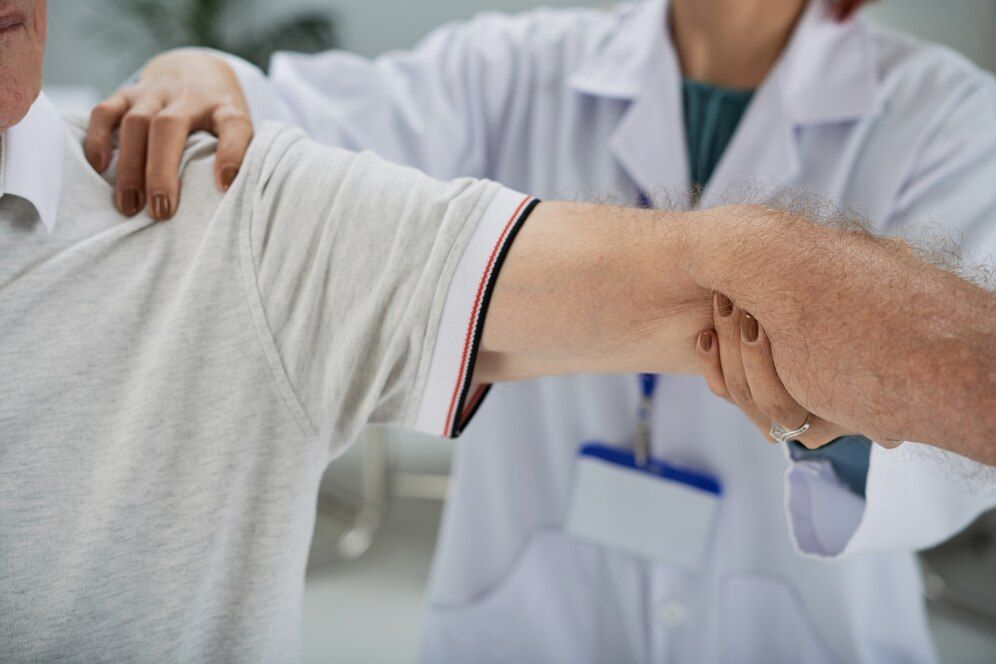Treating CRPS: What You Need to Know
Complex Regional Pain Syndrome (CRPS) is a condition that causes chronic pain, usually in an arm or leg. It often starts after an injury, surgery, stroke, or heart attack. The pain is much more severe and long-lasting than what is typical for the initial injury. The exact cause of CRPS isn't fully understood, but the pain is thought to be related to abnormal responses by the nervous system.
What Is CRPS?
CRPS stands for Complex Regional Pain Syndrome. It’s a chronic pain condition that usually affects an arm or leg. CRPS often begins after an injury, surgery, stroke, or heart attack. The pain, however, is more intense and lasts longer than usual. Because of the severe pain, even a simple touch or slight movement can be very uncomfortable.
Doctors still don’t know exactly what causes CRPS. It might be related to problems in the nervous system. Sometimes, the nervous system sends pain signals even after the initial injury has healed. This can cause the affected area to stay painful and sensitive for a long time. In some cases, even when there is no clear injury, CRPS can still develop.
There are two types of CRPS. Type 1, also called reflex sympathetic dystrophy (RSD), happens when there is no confirmed nerve injury. Type 2, or causalgia, occurs after a nerve injury. Although the types are different, both cause severe pain and similar symptoms.
Recognizing Symptoms of CRPS
CRPS can be tricky to diagnose because its symptoms are similar to other conditions. However, there are some signs to look out for:
1. Chronic Pain:
The pain can be described as burning, throbbing, or aching. It is often more severe than what you would expect from the initial injury.
2. Swelling and Stiffness: The affected area might swell and become stiff. Swelling can change over time, getting better and then worse again.
3. Color and Temperature Changes: You might notice the skin in the affected area changing color. It can become red, blue, or even very pale. The area might also feel warmer or cooler than the rest of your body.
4. Sensitivity: The skin may become very sensitive. Even a light touch or breeze can cause severe pain.
5. Abnormal Hair and Nail Growth: You might see changes in hair and nail growth in the affected area. Hair might grow faster or slower than normal, and nails might become brittle.
6. Muscle Weakness: Over time, you might find it harder to move the affected area. Muscles can become weak and might waste away if not used.
If you notice these symptoms, it’s important to see a doctor for proper diagnosis and treatment. Recognizing CRPS early can make it easier to manage the condition and reduce pain.
Medical Treatments for CRPS
Treating CRPS requires a combination of medical treatments to manage pain and improve movement. Doctors often start with medications to relieve symptoms. Pain relievers like ibuprofen and naproxen can help reduce pain and inflammation. For more severe pain, stronger medications like opioids may be prescribed, though these are usually for short-term use to avoid dependency.
Antidepressants and anticonvulsants are also common in treating CRPS. Medications like amitriptyline and gabapentin help to modify the nerve signals to the brain, reducing pain and discomfort. Sometimes, corticosteroids are used to decrease inflammation and swelling. These can be very effective in the early stages of CRPS.
In addition to medications, physical therapy is crucial. Regular exercise helps maintain movement and strength in the affected limb. A physical therapist can guide you through exercises designed to improve flexibility, strength, and overall function. Occupational therapy can also help with daily activities, making tasks easier and less painful.
For some, nerve blocks or injections may be recommended. These treatments involve injecting anesthetic agents near the affected nerves to block pain signals. This can provide relief for weeks or even months, allowing for more effective physical therapy and rehabilitation.
Interventional Pain Management Options for CRPS
For more severe cases of CRPS, interventional pain management options are available. One effective treatment is spinal cord stimulation. This involves placing a small device near the spine that sends electrical signals to the spinal cord. These signals can interrupt pain messages to the brain, significantly reducing pain.
Another option is sympathetic nerve blocks. These blocks target the nerves involved in the pain response, providing relief that allows you to engage in other therapies more effectively. Radiofrequency ablation is another technique, which uses heat generated by radio waves to destroy nerve tissue that is causing pain.
Regenerative therapies like Platelet-Rich Plasma (PRP) injections are also being explored for CRPS. PRP uses your own blood, processed to concentrate the platelets, and then is injected into the affected area. This can promote healing and reduce pain by using your body’s natural healing processes.
Finally, ketamine infusions are a newer treatment option. Ketamine, an anesthetic, is administered in low doses to help manage pain and improve mood. This can be especially beneficial for those who have not responded well to other treatments.
Conclusion
CRPS is a challenging condition, but effective treatments are available. Understanding what CRPS is and recognizing its symptoms are the first steps toward managing it. Medical treatments, including medications and physical therapy, play a big role in relieving pain and improving function. For more severe cases, interventional pain management options offer additional relief and hope.
At Apollo Spine and Pain Center, we specialize in helping people manage their pain and improve their quality of life. Whether you are dealing with CRPS or another painful condition, our team is here to offer support and effective treatment options. If you’re struggling with CRPS, don’t wait to seek help. Contact our
chronic pain management doctor today to find out how we can help you take control of your pain and reclaim your life.












